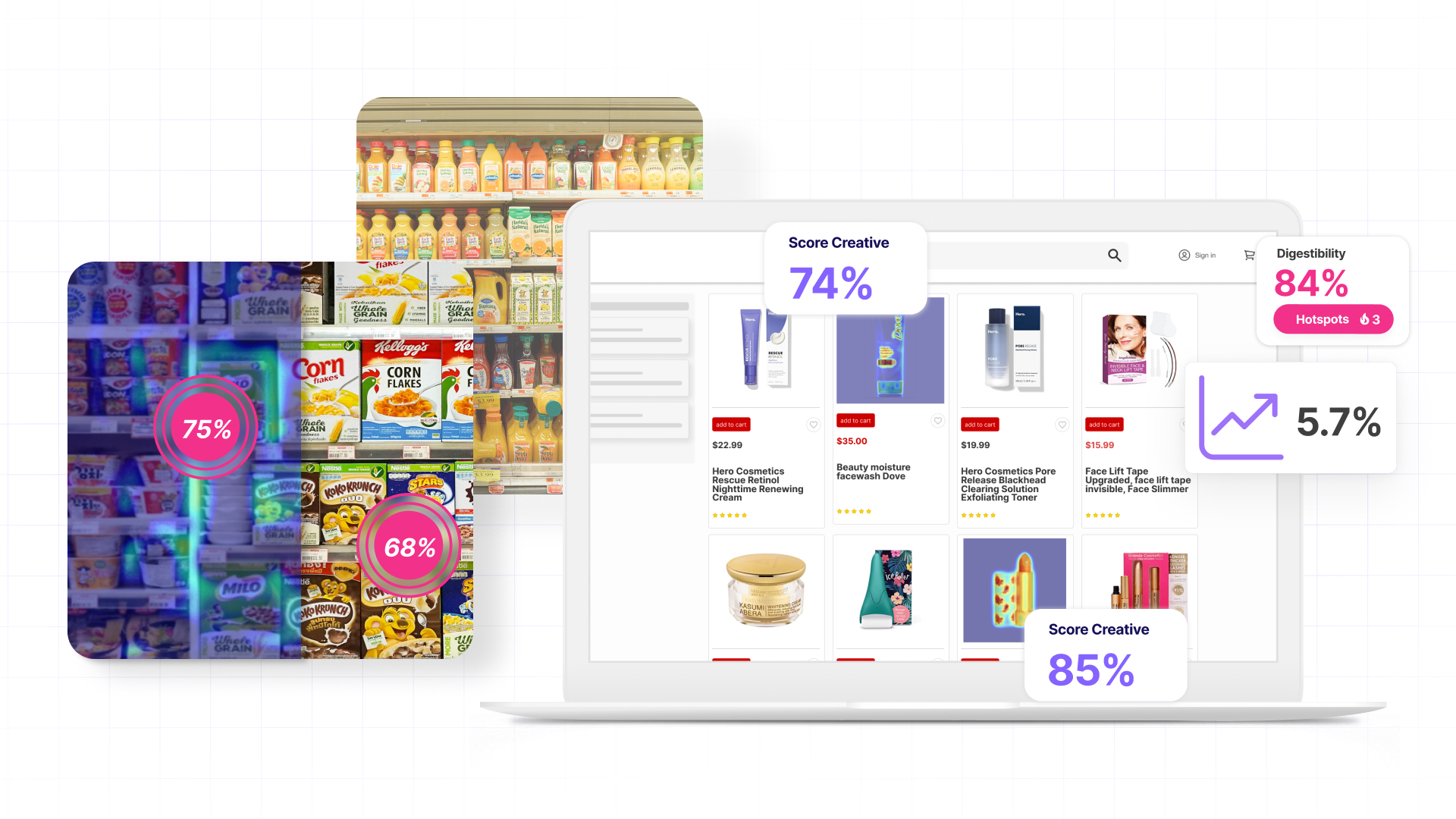Marketing has evolved over the decades. The impact, influence, and value marketing activities generate have increased with new advances in technology and innovations in strategy.
More importantly, advancements in data science have merged with marketing to create a new dynamic field called marketing analytics, that continues to unlock powerful new insights.
You can better understand who your target audience is, their buying patterns, likes and dislikes, ability to be influenced by social trends, and many other important factors more accurately thanks to these insights.
Unlike print advertising, when businesses had no choice but to mass market their products in hopes of reaching their target audience, businesses today can run highly cost-effective targeted ads on platforms such as LinkedIn, Facebook, and Instagram.
All of this is possible because data has been quantifiable because of the internet. You can measure and understand consumer behavior more accurately, and optimize marketing campaigns to perform more effectively.
Marketing analytics is a unique new field that promises effective marketing. Take a look at how marketing analytics work and how your business can leverage it to increase ROI.
What is Marketing Analytics?
Marketing analytics is the examination of data to understand how well marketing efforts are performing. The goal of marketing analytics is to study data in a quantitative manner and help identify room for improvement across marketing efforts.
Ultimately, the end goal is to use actionable data to achieve higher quality outcomes, such as better qualified leads, more sales, increased Monthly Recurring Revenue (MRR)/Annual Recurring Revenue(ARR), etc.
How Does it work?
Phase 1: Setting metrics
Start by identifying metrics that you’ll be measuring outcomes by. These can be KPIs such as no. of impressions generated, no. of leads, no. of conversions, etc.
Phase 2: Identifying the tools you’ll need
One of the most critical steps is finalizing the Martech stack that you’ll be using in your marketing campaign. Using effective marketing tools will help you understand the data at your disposal and allow you to unlock insights critical to the success of your marketing campaign.
Phase 3: Data processing
From data collection and preparation to output and storage, making sure the data processing lifecycle is followed accurately will determine the quality of the insights generated by your campaign.
Phase 4: Launching the marketing campaign
Finally, launch the marketing campaign and wait for consumer interaction to measure how well it is performing.
Phase 5: Gathering insights and creating reports based on analytics
The relevant tools will help you understand the insights and results generated from your campaign. Here, the marketing team takes over and analyzes how to use the data generated to better optimize the campaign.
Phase 6: Experimentation and acting on insights
After results are generated, experimentation such as A/B tests will help close gaps in your campaign and help optimize your marketing efforts to their full potential.
Phase 7: Creating a feedback loop
Finally, the most crucial part of marketing analytics is to use the results generated from past marketing efforts along with the data you have collected to understand how campaigns can be optimized in the future. Creating a feedback loop that informs future marketing activities and learns from past efforts will help increase efficiency.
Why is Not Using Data a Problem?
Marketing activities have to leverage data and use it to optimize their marketing campaigns. Ignoring to do so will result in mismatches, such as a failure to understand who your customer is or whether they’d buy your product.
The impact of not understanding your customer will prove critical. Organizations will end up marketing to the wrong customer. Or, in the scenario where the right customer is identified, a lack of data will result in a lack of understanding of the customer. The result is simple: lower conversions because of a lack of understanding of what the customer is looking for.
More importantly, a lack of data informing your marketing strategy will result in your marketing spend being higher and will add to unnecessary costs in the long run that your business will not be able to withstand.
A very real and practical example of this would be two companies, say company A and B, choosing to run ads on Google.
Company A does audience profiling, looks at keywords and user intent, and studies data to understand how these keywords relate to their target audience. On a wider scale, Company A does its best to run a targeted data-driven campaign to make sure its ads show up in front of the right person.
Company B also includes keywords in its Google ad campaign, but relies on intuition and human experience to shortlist the keywords they target. There’s no data to back up the reasoning for choosing the keywords, rather a ‘gut feeling’ driven approach.
Of course, it’s logical to believe that Company A has a higher probability of achieving more conversions and attracting quality leads to their business. Meanwhile, Company B’s ‘hit or miss’ approach clearly shows a lower probability of achieving real results.
Key Marketing Analytics
Behavior Analysis
Behavior analysis is a key aspect of marketing analytics used to understand consumers by recording their behavior. Factors such as buying patterns, frequency of buying, the likelihood of being influenced by social trends, etc., are studied to understand how to market the product more effectively.
This metric plays a key role in digital marketing today, with businesses using it to study their target customers more effectively. You can better position marketing campaigns, run ads that are optimized and targeted, and eventually increase the chances of the consumer interacting with the product and eventually buying it. Ultimately, this process helps result in a better ROI.
For example, an e-commerce store will study how many users added a product to their cart, but abandoned it and never completed their purchase. By studying behavioral trends, key insights can be gained into why the cart was abandoned. Behavior analytics can reveal factors such as a need to improve UI, and how it’s ultimately influencing user behavior and conversion rates.

Predictive Analytics
In predictive analysis, past data is studied to predict future outcomes. In marketing, data such as consumer behavior, social trends, buying patterns, etc. can be studied at scale to better position marketing campaigns.
For example, predictive analytics can be used to study past consumer data at scale using AI and ML techniques to predict the most profitable consumer segment to target. Another example would be using predictive analytics to understand what kind of brand packaging would be most effective based on the product's target audience.
Particularly with visual content, predictive analytics has a growing role, with companies such as Dragonfly AI leveraging AI and ML techniques to analyze visual content and predict what kind of visual design would work best for the company’s target audience. Predictive analytics is useful when the volume of data is large, and large sample sizes are available to make accurate predictions. In predictive analysis marketing, AI and ML techniques such as clustering, propensity modeling, and recommendations filtering are usually used to sort through large volumes of data.

Personalization
McKinsey reports that the future of marketing is personalization and that this will be the prime driver of marketing success over time. The findings are grounded in reality, as new advanced marketing tools that leverage AI can personalize ads according to the consumer, leading to higher chances of users interacting with such ads and converting to customers.
Personalized ads are fairly common. Online platforms such as Google, Facebook, and Instagram provide marketers access to consumer data so businesses can run very specific and personalized ads.
For example, a business operating in London can target females aged 14-20 with certain social behaviors by running ads that are extremely specific to such a group. The ads will only appear to people who fall under such categorizations. The business can personalize its ads by being extremely specific such as “If you’re a teenager living in London, you’re probably facing XYZ problems.” Further intelligent tools can also allow you to customize your product features, such as packaging, to align your design according to what your target audience is likely to interact with.
Personalization using marketing analytics is how marketers are likely to drive engaging and effective marketing campaigns in the future. The buyer’s journey can be personalized at all stages of the funnel, leading to higher conversion and a better ROI for businesses.
Neuromarketing
Instead of traditional marketing methods where focus groups and surveys are used to perform market research, neuromarketing collects information about how the human brain responds to certain activities.
This is achieved by methods such as mapping brain activity and tracking eye movement to create campaigns that align with human cognitive behavior.
The idea is that there’s always a gap in identifying what people like and dislike when you ask them through methods such as surveys, as there are always errors and biases present. Simply put, people might not be open about their needs, they might not understand them, or they might not even be aware of them.
Neuromarketing relies on studying human cognition and behavior to understand how the brain actually reacts to certain marketing activities vs. others. This provides a more accurate judgment of how to position marketing efforts.
A fairly recent and relevant example would be leveraging AI and neuromarketing to create compelling product designs. The marketing team will record the human eye’s natural gaze path when looking at a certain kind of product, and create a visual hierarchy and design based on this natural gaze path. The team would also study how the target audience reacts to certain kinds of designs, color schemes, fonts, etc. to better understand what kind of packaging would work best.
.png?width=1920&height=1080&name=landscape%20image_04%20(2).png)
Creative Intelligence
A unique new discovery within marketing, creative intelligence leverages existing data about how consumers react to certain kinds of elements, such as visual content. From there we can generate insights about how creatives can leverage this information to make data-driven creative outputs.
Imagine you’re a creative in a marketing team chosen to lead the brand design and strategy for all visual content. You need to create a standardized format for design that everyone in your team follows, and a design format that resonates with your target audience.
Using creative intelligence strategies, you’ll first learn how your target audience responds to different designs. You’ll be using tools that leverage advanced techniques such as AI to sort through large volumes of data. From there, creative intelligence strategies will help unlock insights such as where consumer attention will be for that specific design.
The tools will enable you to predict patterns in the visual hierarchy for your design, to even show how the consumer’s gaze path naturally follows when looking at your design.

By having such powerful insights, you can create data-informed designs to make sure your product design is biologically aligned with the consumer’s behavior. Ultimately, this will help support getting your messaging to land effectively and ensure your visual content is optimized to maximize the ROI of the company.
Marketing Automation
In reality, marketing analytics today is the ability of marketers to use advanced tools to automate the processing of large volumes of data.
The end goal is to develop processes using tools, where valuable insights that drive growth can be generated with as little human intervention as possible.
Of course, the role of marketers in this entire process is to take the processed data, understand insights and patterns generated, and find unique ways to use this data in marketing activities.
This means that marketers need tools that automate redundant processes, so they can focus on intellectual and creative work by looking at the insights generated by these tools to drive growth.
Marketers today are only as good as the tools they integrate into their processes. More importantly, marketers can only drive growth in today’s landscape if they have automation tools that can sort through the data and harness insights for humans that might not have been possible before.
Optopus Sees 40% Increase in Sales
Let’s take a look at how marketing analytics works in a practical setting, and how businesses are leveraging advanced marketing analytics tools to boost sales and ROI.
Optopus, a leading agency that helps brands increase their sales using tools such as eContent optimization, wanted to remove ‘intuition-based decision-making’ before launching products for the brands they were working with.
The agency wanted a way to validate its visual content and align its design with something that would resonate with the brand’s target audience. They wanted data-driven decision-making before launching the design and removing the reliance on intuition to see what would work.
Ultimately, Optopus opted for Dragonfly AI to identify what elements of their design were failing to communicate with prospective customers at the audit stage.
Using the Dragonfly AI tool, they optimized their design and implemented it at every stage of the process to create designs based on data. Ultimately, they were able to increase sales by up to 40% by using powerful marketing analytics to assist them with their creative process.
Grow Revenue by Implementing Marketing Analytics
Choosing to ignore marketing analytics tools is the easiest way to lose market share to competitors. The competition will always take advantage of opportunities, such as using marketing analytics to optimize marketing campaigns and increase ROI.
.png?width=1920&height=1080&name=landscape%20image_04%20(1).png)
This means that using marketing analytics tools such as Dragonfly AI isn’t a choice, but rather a necessity. Such tools will act as the new foundation for any business by helping process large volumes of data and generating insights using AI that wasn’t possible before.